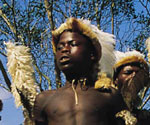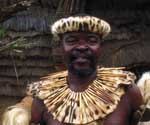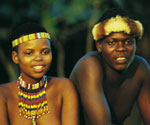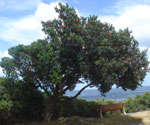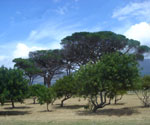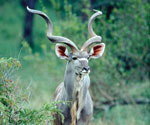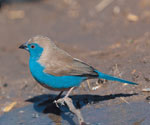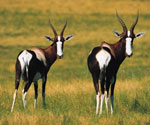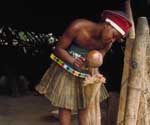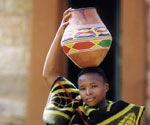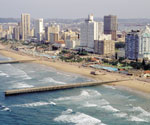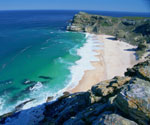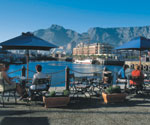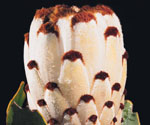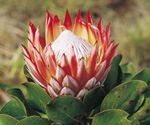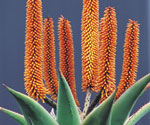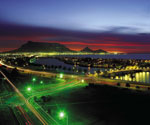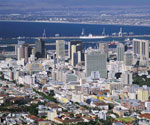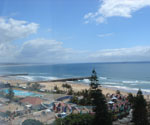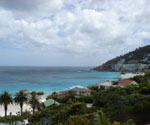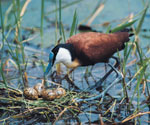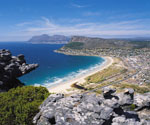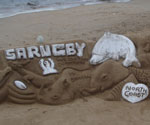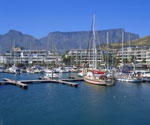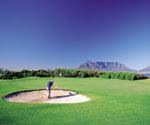South Africa, the "rainbow country", has many attractive tourist resorts. Before my departure, friends all said, "It's also my cherished dream to go to South Africa, but the gods have smiled on you." So, with great curiosity, I set out for this mysterious land. Yet when my flight returned onto the tarmac of the Beijing Capital International Airport again, my excitement and joy faded away gradually. Today the small pleasures in South Africa have become vague, sweet memories. The most overwhelming impression I retain concerns the incredible beauty of this country and only those who have been there can truly understand.
A perfect combination of ancient and modern
South Africa is a very beautiful country with enchanting scenery and gorgeous colors. But the most fantastic aspect of the landscape is its perfect combination of ancient and modern, the integration of different nationalities and cultures -- the vast African prairie and European style town; the luxurious villa and aboriginal hut; the old golden palace and the modern city. No wonder that whenever people speak of South Africa they say: "Men should not accept destiny, but choose it", while others remark: "a European country in Africa".
South Africa is different from the other African countries because of the long history that has been influenced by Europe. Architecture there predominantly follows European style, especially regarding decorative features. Johannesburg is a prime example. It's a lively and energetic city, giving off the air of modernity everywhere. Buildings there are as beautiful as anywhere in Europe, I believe that every visitor is initially fascinated. But on the streets, local people stroll in African traditional dress. The entire city also maintains the original facade of the gold rush shantytowns, giving an older, western feel to the town.
Colorful nature and culture
I have lived in Dalian, a coastal city in northeast China, for about 20 years. Few seaside cities make any impression on me, but Cape Town was an exception. This city drew me in; it is a beautiful urban spot, close to both the mountains and the sea. The shimming green hills and clear azure water intoxicated me and I felt great regret to have only one day there. This city is truly blessed by the gods.
Among all the beauty spots, Table Mountain and Cape Point impressed me the most. Table Mountain is the symbol of Cape Town, with a plateau on top too level to imagine. It's usually enveloped in mist, as if a clean tablecloth were covering it. Cape Point is the most southwestern point of the African continent: the Atlantic Ocean and Indian Ocean join up here, forming a huge whirlpool. Reaching the peak, you can look out upon the spectacular view. It's said that the color of these two oceans differs -- the Atlantic is dark, and the Indian is light.
Besides natural beauty South Africa is famous for its multiracialism and multiculturalism, and this is why the nation is deemed as a "rainbow country". I delved deeper into South Africa's human and cultural environment and learned about many tribes of people: Ngoni (including Zulu, Xhosa, Ndebele and Swazi), Sotho-Tswana (South Sotho and North Sotho), Tsonga and Venda. Truly, multiracialism and multiculturalism are power sources for the country.
There are many areas specially designed for tourists to get a taste of what ethnically diverse South Africa really is. Visitors often feel empathy with this "rainbow country" filled with various ecological and racial differences. "The Cradle of Humankind" is a World Heritage Site nominated because of the rich diversity of fossils found in the area. They cast light on our common human ancestors and provide information about other human relatives as well as the ancient human environment. Most of the site is located on dolomite, type of rock that is water-soluble. Dolomite enhances the formation of caves and fossils. In a special culture village inside the World Heritage Site, visitors experience ebullient African music, simple aboriginal and multi aboriginal culture, feeling a unique lingering charm mixed with art, history and culture. It's worthwhile to mention that laughing is endemic in South Africa: wherever you are, you can see smiles and you'll feel like smiling back.
Animals and plants bring out the best in each other
With the country area of 1,220,000 square kilometers, the number of biological species in South Africa ranks second in the world. From dry, open deserts to the thick, canopied rainforests, from splendid mountain ranges to bush shrubbery, South Africa is filled with abundant and unique animals and plants. Tourists may go on safari to view lions, leopards, elephants, buffalos, giraffes, antelopes and baboons in the wild, an unparalleled experience in the world.
South Africa has many wild animal conservation districts. Visitors can deeply feel the harmony between plants and animals. On the way to a conservation district, tourists pass luxuriant and green mountains: the air even has a grassy aroma. But in contrast to the lush botanical environment South Africa is definitely an animal's paradise. Beasts aren't caged, but free. They run as fast as they like and fully enjoy the natural charm of the African jungle. Blue sky, white clouds, green grass, red earth, stream and rocks; everywhere is the splendor and color of life.
I greatly appreciated the colorful landscape and culture. This adventure made me realize the essence of the "rainbow country". "Men should not accept our destiny, we should choose it" -- this is sufficient for my first tour abroad.
(China.org.cn by Sun Ming December 19, 2007)


